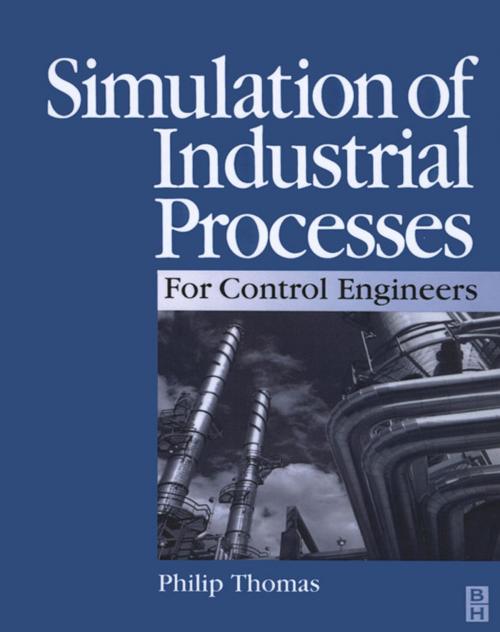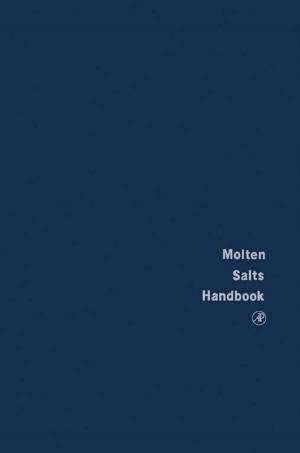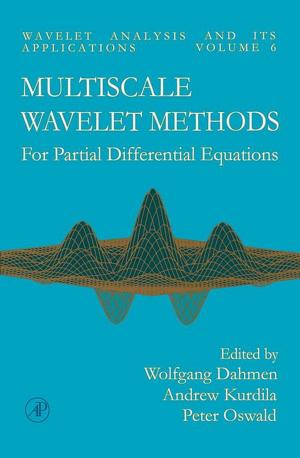Simulation of Industrial Processes for Control Engineers
Nonfiction, Science & Nature, Science, Biological Sciences, Biotechnology, Technology, Computers| Author: | Philip J Thomas, BSc, CEng, FIEE, FInstMC | ISBN: | 9780080517247 |
| Publisher: | Elsevier Science | Publication: | July 13, 1999 |
| Imprint: | Butterworth-Heinemann | Language: | English |
| Author: | Philip J Thomas, BSc, CEng, FIEE, FInstMC |
| ISBN: | 9780080517247 |
| Publisher: | Elsevier Science |
| Publication: | July 13, 1999 |
| Imprint: | Butterworth-Heinemann |
| Language: | English |
Computer simulation is the key to comprehending and controlling the full-scale industrial plant used in the chemical, oil, gas and electrical power industries. Simulation of Industrial Processes for Control Engineers shows how to use the laws of physics and chemistry to produce the equations to simulate dynamically all the most important unit operations found in process and power plant.
The book explains how to model chemical reactors, nuclear reactors, distillation columns, boilers, deaerators, refrigeration vessels, storage vessels for liquids and gases, liquid and gas flow through pipes and pipe networks, liquid and gas flow through installed control valves, control valve dynamics (including nonlinear effects such as static friction), oil and gas pipelines, heat exchangers, steam and gas turbines, compressors and pumps, as well as process controllers (including three methods of integral desaturation). The phenomenon of markedly different time responses ("stiffness") is considered and various ways are presented to get around the potential problem of slow execution time. The book demonstrates how linearization may be used to give a diverse check on the correctness of the as-programmed model and explains how formal techniques of model validation may be used to produce a quantitative check on the simulation model's overall validity.
The material is based on many years' experience of modelling and simulation in the chemical and power industries, supplemented in recent years by university teaching at the undergraduate and postgraduate level. Several important new results are presented. The depth is sufficient to allow real industrial problems to be solved, thus making the book attractive to engineers working in industry. But the book's step-by-step approach makes the text appropriate also for post-graduate students of control engineering and for undergraduate students in electrical, mechanical and chemical engineering who are studying process control in their second year or later.
Computer simulation is the key to comprehending and controlling the full-scale industrial plant used in the chemical, oil, gas and electrical power industries. Simulation of Industrial Processes for Control Engineers shows how to use the laws of physics and chemistry to produce the equations to simulate dynamically all the most important unit operations found in process and power plant.
The book explains how to model chemical reactors, nuclear reactors, distillation columns, boilers, deaerators, refrigeration vessels, storage vessels for liquids and gases, liquid and gas flow through pipes and pipe networks, liquid and gas flow through installed control valves, control valve dynamics (including nonlinear effects such as static friction), oil and gas pipelines, heat exchangers, steam and gas turbines, compressors and pumps, as well as process controllers (including three methods of integral desaturation). The phenomenon of markedly different time responses ("stiffness") is considered and various ways are presented to get around the potential problem of slow execution time. The book demonstrates how linearization may be used to give a diverse check on the correctness of the as-programmed model and explains how formal techniques of model validation may be used to produce a quantitative check on the simulation model's overall validity.
The material is based on many years' experience of modelling and simulation in the chemical and power industries, supplemented in recent years by university teaching at the undergraduate and postgraduate level. Several important new results are presented. The depth is sufficient to allow real industrial problems to be solved, thus making the book attractive to engineers working in industry. But the book's step-by-step approach makes the text appropriate also for post-graduate students of control engineering and for undergraduate students in electrical, mechanical and chemical engineering who are studying process control in their second year or later.















